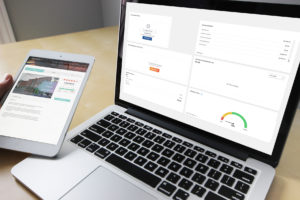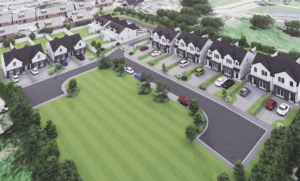As much of our focus at the moment is on social housing projects, we are writing this Blog to demystify the convoluted sales process with Local Authorities (LA’s) and Approved Housing Bodies (AHBs) . This will give you a better understanding of the levels of commitment from LA’s and AHB’s when it comes to the process of them negotiating with Developers to purchase housing units for social housing. This blog is meant as a guide for lenders, for the purpose of providing a high-level understanding of this area. As such, we have simplified the process into 5 stages, and have not gone into the legal minutia of these contracts.
As you are no doubt aware there is significant political pressure on LA’s and AHB’s to source housing for the social ownership model.
These developments are regarded as turnkey developments, which basically means the LA’s and AHB’s agree on a specification for the houses with the Developer. The Developer then completes the houses and sells them at the price agreed in the Contract.
When LA’s or AHB’s negotiate with Developers there are various stages of engagement. As negotiations progress, the sale of the completed units become more likely. The following are the general levels of engagement as we understand them.

The 4 Stages of the Purchasing Process


Developers have a good understanding of where there is the most need for social housing as they have good relationships with the LA’s and AHB’s. This knowledge allows them source sites in the relevant areas and if the site does not have planning they will look to put in place planning, for the type of housing required, typically a combination of 1, 2, and 3 bedroom units.
A more detailed description of the commitment levels and issues that are common at each of the various stages in the purchase of a development by an AHB is set out.


At this point, they will be having discussions, with the LA’s or an AHB, which will lead to a Letter being provided by these parties stating that they would look to purchase the development, the Letter of Intent may or may not indicate an overall price at this stage. This letter will be heavily caveated. There is no commitment to purchase the development at this point, accordingly, no financial institution would offer to provide funding for the development based on the Letter of Interest.


After further negotiations, the LA’s or AHB, will provide a Letter of Intent, which will state the individual price that they will purchase every unit within the development and will lay out their specific requirements for the Development as a whole. This letter will state that the offer is subject to them sourcing funding to allow them to purchase the development. It is at this point that financial institutions, including Property Bridges, are happy to provide funding for the purchase of the site and / or the build-out of the units on the site.
There is a chance that the development would not be purchased at the time of completion, if for example, the LA’s due diligence highlighted an issue with the legal title of the site, or if building works are not carried out as per building regulations. We in Property Bridges mitigate this risk by getting our legal advisors and Quantity Surveyors to carry out their own due diligence process.


The purchase of all social housing developments requires approval of the Dept of the Environment, this is done to ensure all social housing regulations are met and value for money is being achieved.
The purchase of all social housing developments requires approval of the Dept of the Environment, this is done to ensure all social housing regulations are met and value for money is being achieved.
To achieve approval the relevant LA has to submit a detailed report which covers a number of headings such as housing requirements in the area of the development, the location of the site in relation to existing services and facilities, any site constraints, and value for money is achieved.
The normal timeframe for receiving approval from the Dept of the Environment is typically 4-5 months from the submission of the report from the LA’s. It is our experience that LA’s have a good understanding of what the Department requires to give approval for social developments, so it would be surprising if they refused approval to purchase a completed development.
When approval is granted the legal teams for both the LA’s (or AHB) and the Developer draw up the Contract for the sale of the completed development. At this point, funding is “ring-fenced” for the purchase of the development by the LA’s or AHB.


At this point in the process, a contract for the sale of the relevant social housing development has been agreed upon and signed by all parties. The only issue which could result in the sale of the development not going ahead would be if the Developer failed to build the houses to the required specification. In Property Bridges we mitigate this risk by having our QS constantly review the build and certification process during the lifetime of the loan.
Given the current demand for social housing and the political pressure to complete sales, we are of the view that all LA’s and AHB’s will complete the purchase of any social housing development once it is contracted and the units meet building regulations.
In summary, developers and funders welcome the reduced exit risk an AHB or LA can provide on the purchase of finished units. However, the presence of a LA or AHB should not be seen as a certainty by lenders. Delays are common and it is possible for interest to fall away even at a very late stage in the process.
In Conclusion
While developers and funders welcome the reduced exit risk an AHB or LA can provide on the purchase of finished units it should not be seen as a certainty by lenders. Delays are common and it is possible for interest to fall away even at a very late stage in the process.


